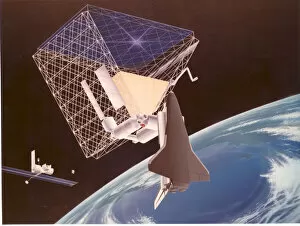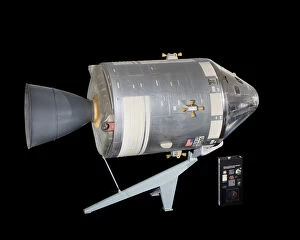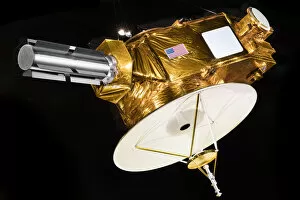Spacecraft Collection (page 4)
"Exploring the Final Frontier: A Journey through Spacecraft" Skylab in orbit above Earth at the end of its mission, 1974
All Professionally Made to Order for Quick Shipping
"Exploring the Final Frontier: A Journey through Spacecraft" Skylab in orbit above Earth at the end of its mission, 1974. Creator: NASA Cassini spacecraft orbiting Saturn and its moon Titan. The Gemini 7 spacecraft in Earth orbit, capturing the beauty of our planet from above. Space shuttle Discovery lifts off from Launch Pad 39A at Kennedy Space Center in Florida, embarking on a new adventure. Witnessing history as Gemini V spacecraft is launched by a Titan II on August 21st. Four moons of Jupiter - Io, Europa, Ganymede, and Callisto - enchant us with their celestial dance in 1979. Voyager 1 spacecraft boldly ventures into interstellar space, leaving our solar system behind. A lone Star Fighter pilot looks around the alien landscape after a crash landing – an explorer amidst unknown realms. Space shuttle Atlantis twin solid rocket boosters ignite to propel the spacecraft towards infinite possibilities. Space-Us-Apollo 1: Remembering those who bravely paved the way for future space exploration endeavors. Saturn V rocket launch depicted through captivating artwork – a symbol of mankind's ambition reaching for the stars. Immerse yourself in fantastic adventures with stunning Sci-Fi magazine covers featuring imaginative fantasy spacecraft. Embarking on these incredible journeys aboard various spacecraft has allowed humanity to push boundaries and expand our understanding of the universe we inhabit. From Skylab's final moments gracefully circling Earth to Cassini's mesmerizing encounters with Saturn and its moon Titan; from Gemini missions showcasing breathtaking views of our home planet to voyages beyond our solar system with Voyager 1 – each milestone represents humanity's insatiable curiosity and relentless pursuit of knowledge. Even amidst fictional landscapes like that witnessed by a lone Star Fighter pilot or illustrated on Sci-Fi magazine covers depicting fantasy spacecraft, we find inspiration to dream beyond the confines of our own world.
















































